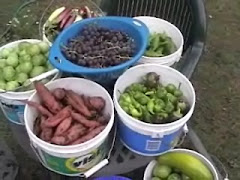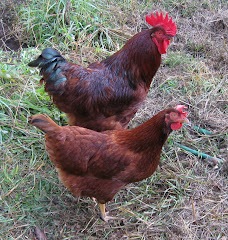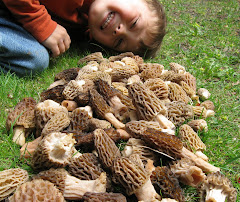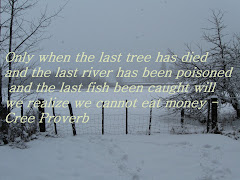This winter I have been experimenting with a homemade shampoo based on the soapwort we grow in our garden, now our only source of
laundry detergent. My focus has been on finding a way to thicken the soap enough so that it would have the consistency of a commercial shampoo. For this endeavour I have used thickeners such as flax, dried mallow, powdered beans, and various combinations of each with limited success...so far. I am fairly confident that some or all of these ingredients combined with my soapwort will make an excellent hair wash once I am able to determine the proper solution. Unfortunately, the supply of dried soapwort set aside for these experiments is all but used up so self-reliance on the shampoo front is on hold until later this year when a new supply of roots can be obtained from the gardens.
This is the last of our dried soapwort, some of which has been powdered.

As so often seems to happen with these funky little projects one thing leads to another and I often find myself discovering or in this case uncovering something altogether different. I was aware that a member of the mallow plant genus was at one time used to make the original confectionery "marshmallow," via its roots. Similar varieties, Common Mallow, Hollyhocks, and (I think) Musk Mallow, that we once introduced as flowers and have now naturalized on the fringes of our garden have the same mucilaginous properties. Hence the reason I am attempting to use them in my shampoo making ventures.
Shampoo making venture #3 produced plenty of suds but not enough consistency...
Anyway, having not thoroughly researched mallow until recently, I was unaware and quite surprised at all the other benefits associated with these plants. Apparently the mallow that was once used as a binding agent (binding sugar and egg whites) in the making of marshmallows has an unbelievably immense medicinal profile as well.
Common Mallow (Malva sylvestris) 
The root and leaves contain a slimy mucilage that can be used to sooth irritated tissue and relieve various forms of inflammation. They can be made into a tea or combined with sugar to make a syrup, both tea and syrup can be used as an effective cough remedy. Because it contains fair amounts of salicylic acid, an ingredient used in the preparation of aspirin, it has also been used throughout history to help relieve sore throats, reduce fever, and even headaches. I find it somewhat fascinating that, unbeknownst to me, I have had a potentially effective cold and flu relief/remedy growing right under my nose all along and have not until recently been aware of this plant's full potential.
Pulling a mallow root. I have yet to positively identify these as Musk Mallow.

Another once common use for mallow was as an emollient for dry irritated skin. I've read that the mucilages contained in the plant can not only be used internally but externally as well helping to heal skin issues that range anywhere from from diaper rashes and sunburns to psoriasis and eczema. Also, the plants salicylic acid content makes it a viable treatment for acne, helping to clean out the skins pores thus reducing the number of breakouts.
Besides using the plant as a cough suppressant, it is the eczema treatment that we are most excited about. Our grandson, like his father, has issues with dry itchy skin. So much so that it often keeps him awake at night tossing and turning. We are looking forward to exploring this as a possible solution to his dilemma. The poor kid, he is still trying to get the bean particles out of his hair from our last experiment. Hey, someone needs to be the guinea pig and he was paid in chocolate for his efforts. Besides, just think of all the stories he will someday be able to tell his own children about his crazed grandparents and all of their strange and unusual ways.
In addition, the flowers and young leaves can be eaten raw in salads and along with the rest of the plant are reportedly a good source of beta-carotene, amino acids,
many minerals and vitamins including B1, B2, and B3. Everything I have read states that there are no known side effects to using this plant in it's various forms...in moderation. Evidently, mallow is so safe that mothers used to give the peeled root to their babies to help with teething discomfort. I must question this action as it would seem to pose as a possible choking hazard?
Common Mallow roots for teething infants? Perhaps they should be tested on our teething puppy first...
We will be making a tea this week by allowing a small amount of the powdered root to steep in warm water for awhile and adding honey upon serving. While it is rare for either of us to come down with a cough or sore throat we can still try it just for grins. What I really need is to find a sick subject to experiment on. The grandson is back in school this week and believe me it is only a matter of time before he comes to us with some sort of ailment that involves coughing. As long as he is unaware that there is anything but honey in his tea we shall soon see if it really works.:)
 We normally only make two types of meals for breakfast. The first is our old standby salad, usually with and egg or occasionally some fried spuds on top...and a very berry smoothie. The other meal, depicted above, is always fun because it is a mishmashed combination of whatever was left over from the previous night's dinner. This morning I had blue jade corn bread, gold nugget squash with ginger pear sauce and young dandelions, a thick kale and potato soup, one egg sitting atop sauerkraut, and of course, a small slaw salad. It sounds like a lot but that is all I will eat until dinner.
We normally only make two types of meals for breakfast. The first is our old standby salad, usually with and egg or occasionally some fried spuds on top...and a very berry smoothie. The other meal, depicted above, is always fun because it is a mishmashed combination of whatever was left over from the previous night's dinner. This morning I had blue jade corn bread, gold nugget squash with ginger pear sauce and young dandelions, a thick kale and potato soup, one egg sitting atop sauerkraut, and of course, a small slaw salad. It sounds like a lot but that is all I will eat until dinner.



































